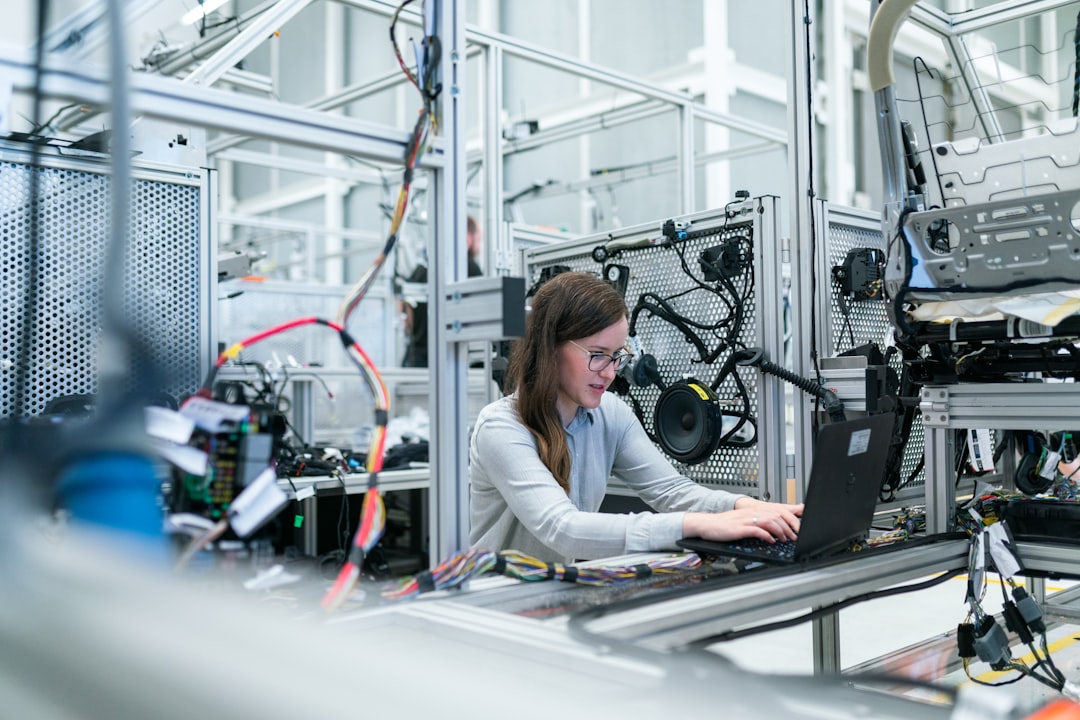Unlock encrypted content
Please enter your SSCE key to initiate on-the-fly decryption.
Decryption key: (Click cancel if you don't have the key)
Copied link to clipboard.
This feature is unavailable for free accounts. Upgrade now and enjoy all Premium benefits.
Go Premium!
This feature is unavailable for free accounts. Upgrade now and enjoy all Premium benefits.
Go Premium!
Please open this page in browser ( Google Chrome or Safari ) to use this feature.
Open In Browser
Biometric Authentication and File Protection: Enhancing Internet Security
Random related video for this blog.
Copied share link to clipboard.
With the increasing prevalence of cyber threats and data breaches, it is crucial to adopt robust security measures to protect our sensitive information. One such measure is biometric authentication, which offers a highly secure and convenient way to verify the identity of users. Combined with advanced file protection and intuitive file collaboration interfaces, biometric authentication can significantly enhance internet security and revolutionize the way we share and store files.
Biometric Authentication: The Future of Digital Security
Biometric authentication refers to the use of unique biological characteristics, such as fingerprints, facial recognition, and iris scans, to verify a person's identity. Unlike traditional password-based authentication, which can be vulnerable to hacking and phishing attacks, biometric authentication offers a higher level of security. This is because biometric data is inherently unique to each individual and cannot be easily replicated or stolen. By implementing biometric authentication, organizations can ensure that only authorized individuals have access to sensitive files and data. For example, a company can use fingerprint scanning to grant employees access to confidential documents, eliminating the risk of unauthorized access. Biometric authentication can also be used to secure online transactions and prevent identity theft, providing users with peace of mind when conducting financial transactions or accessing online services.File Protection and Sharing Capabilities: Safeguarding Your Digital Assets
In addition to biometric authentication, robust file protection measures are essential to ensure the security and integrity of our digital assets. One such measure is the ability to zip entire folders, which allows users to compress multiple files into a single, encrypted archive. This not only saves storage space but also adds an extra layer of security by encrypting the files within the archive. Furthermore, file sharing capabilities play a crucial role in ensuring secure collaboration and efficient communication. With the advent of cloud storage andfile sharing services, sharing files has become easier than ever. However, not all file sharing services offer the same level of security and privacy. It is important to choose a service that prioritizes data encryption and offers end-to-end protection.
Intuitive File Collaboration Interfaces: Enhancing Productivity and Security
Intuitive file collaboration interfaces are designed to simplify the process of sharing and collaborating on files, while also ensuring the security and privacy of sensitive information. These interfaces provide a user-friendly environment where multiple users can work on the same file simultaneously, making collaboration seamless and efficient. Moreover, intuitive file collaboration interfaces often include version control features, allowing users to track changes made to a file and revert to previous versions if needed. This not only enhances productivity but also safeguards against accidental deletions or unauthorized modifications.Vehicle Safety Systems and Cognitive Robotics: Securing the Future
Internet security extends beyond our digital devices and into the realm of physical systems. Vehicle safety systems, for instance, are becoming increasingly connected and reliant on the internet. As vehicles become more autonomous, it is crucial to ensure the security and integrity of these systems to prevent potential cyber-attacks. Cognitive robotics, a field that combines artificial intelligence and robotics, plays a vital role in securing the future of internet-connected systems. By leveraging advanced algorithms and machine learning, cognitive robotics can detect and respond to potential security threats in real-time. This proactive approach to security ensures that vulnerabilities are identified and mitigated before they can be exploited.Conclusion
In conclusion, biometric authentication, file protection, intuitive file collaboration interfaces, vehicle safety systems, and cognitive robotics are all crucial components in enhancing internet security. By adopting these technologies and practices, individuals and organizations can safeguard their digital assets, protect sensitive information, and ensure a secure online environment. The future of internet security lies in the integration of these cutting-edge technologies, providing users with peace of mind and enabling seamless collaboration and communication.Frequently Asked Questions (FAQs) Question: How does biometric authentication work?
Answer:
Biometric authentication works by capturing and analyzing unique biological characteristics, such as fingerprints, facial features, or iris patterns, to verify a person's identity. Question: Can biometric authentication be hacked?
Answer:
While biometric authentication offers a higher level of security compared to traditional password-based methods, it is not entirely foolproof. Biometric data can be compromised if stored improperly or if the biometric system itself is vulnerable to hacking. Question: How can intuitive file collaboration interfaces enhance productivity?
Answer:
Intuitive file collaboration interfaces provide a user-friendly environment for multiple users to work on the same file simultaneously. This eliminates the need for back-and-forth emails and allows for real-time collaboration, thereby enhancing productivity. Question: What are vehicle safety systems?
Answer:
Vehicle safety systems refer to the technologies and features designed to enhance the safety of vehicles and their occupants. These include features such as collision avoidance systems, lane departure warnings, and adaptive cruise control. Question: How can cognitive robotics improve internet security?
Answer:
Cognitive robotics combines artificial intelligence and robotics to detect and respond to potential security threats in real-time. By leveraging advanced algorithms and machine learning, cognitive robotics can proactively identify and mitigate vulnerabilities, ensuring a secure online environment.
By Amelia Isabella
Email: [email protected]
Related
Intelligent File Tagging and Cross-Device File Synchronization: Streamlining Your Digital...
June 17, 2023
Read More
File Preview and Thumbnail Generation: Enhancing User Experience and Efficiency
June 17, 2023
Read More
Cloud Storage Reliability: A Game-Changer in Data Management and Collaboration.
June 18, 2023
Read More
Popular
The Future of File Management: Embracing Edge Computing and Efficient...
November 12, 2025
Read More
The Future of File Sharing: Exploring User-Friendly Solutions and Data...
November 5, 2025
Read More
The Future of File Sharing: Streamlined Workflows for Photographers and...
November 19, 2025
Read More
Exploring the Intersection of Technology: From Cybersecurity to Augmented Reality...
November 16, 2025
Read More
The Future of Technology: Exploring Biohacking, Space Tourism, and Digital...
November 23, 2025
Read More
Exploring the Benefits of Cloud Storage and Innovative Technologies in...
November 26, 2025
Read More
The Future of Digital Transformation: Exploring Smart Homes, Efficient File...
November 30, 2025
Read More
Latest
The Future of Digital Transformation: Exploring Smart Homes, Efficient File...
November 30, 2025
Read More
Exploring the Benefits of Cloud Storage and Innovative Technologies in...
November 26, 2025
Read More
The Future of Technology: Exploring Biohacking, Space Tourism, and Digital...
November 23, 2025
Read More
The Future of File Sharing: Streamlined Workflows for Photographers and...
November 19, 2025
Read More
Exploring the Intersection of Technology: From Cybersecurity to Augmented Reality...
November 16, 2025
Read More
The Future of File Management: Embracing Edge Computing and Efficient...
November 12, 2025
Read More
The Future of File Sharing: Exploring User-Friendly Solutions and Data...
November 5, 2025
Read More
The Future of Cloud Storage: How FileLu Empowers Creative Professionals...
November 2, 2025
Read More
The Future of Autonomous Technologies: Innovations in Robotics, File Sharing,...
October 29, 2025
Read More
Emerging Technologies Revolutionizing File Management: From Li-Fi to Robust Collaboration...
October 26, 2025
Read More
Emerging Technologies: Exploring the Impact of File Access Auditing, Genetic...
October 19, 2025
Read More
The Future of Data Storage: Exploring Advanced Encryption, Mobile Integration,...
October 5, 2025
Read More
Exploring the Future of Data Management: Security, Efficiency, and Cognitive...
September 28, 2025
Read More
Revolutionizing Data Management: Innovations in Storage, Security, and Sustainable Technology.
September 24, 2025
Read More























